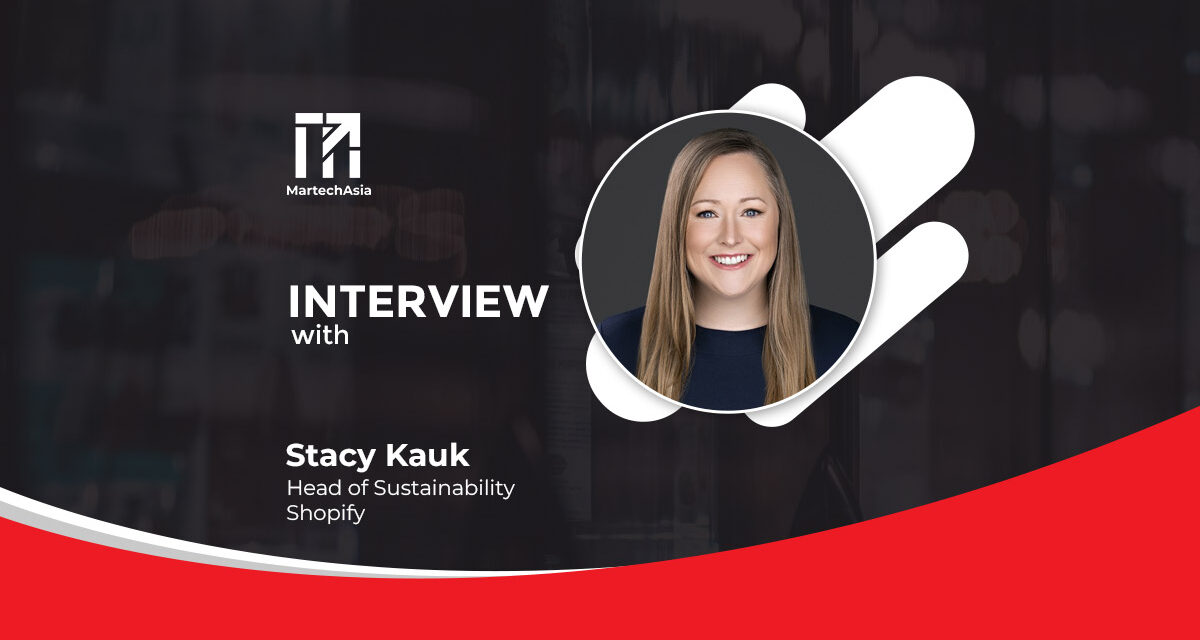The boom in e-commerce is also giving rise to changing consumer behavior, foremost of which is conscious consumerism, where consumers become increasingly aware of the social and environmental impact of their purchasing decisions.
The total e-commerce platform gross merchandise value (GMV) in Southeast Asia grew 1.8 times from 2020 to 2022, totaling $100 billion and all indications show that this online boom is here to stay.
However, in such a rapidly changing environment, consumer behavior is also changing, with individuals becoming increasingly aware of the social and environmental impact of their purchasing decisions. This has become an emerging trend that’s reshaping the way consumers shop and merchants operate.
In this Q&A, Stacy Kauk, Head of Sustainability, Shopify, discusses some of the key concepts of conscious consumerism and how Shopify is positioned to help facilitate merchants’ shift towards sustainable practices.
Can you briefly discuss Shopify’s sustainability efforts related to rising conscious consumerism?
Kauk: Investing in sustainability isn’t just good for the planet – it is good for business. With younger shoppers significantly more likely to say they plan to purchase from sustainable brands (according to Shopify’s BFCM Pulse Report, 2022), climate credentials will be fundamental to securing interest from the next generation of consumers. Bolstering the case for climate-conscious options, 82% of businesses agree that sustainability improves company performance.
Last year, we launched Shopify’s Planet app, designed to help businesses achieve carbon-neutral shipping for all orders, affordably and easily, while funding technologies that actively remove carbon from the atmosphere. Our Planet app comes with storefront icons that allow merchants to promote their commitment to carbon removal, which is critical, given that buyers are becoming increasingly climate-conscious. Shopify’s 2022 Future of Commerce Report found that nearly half (44%) of customers choose to buy from brands that have a clear commitment to sustainability.

As of December 31, 2022, Shopify merchants have used the Planet app to neutralize their shipping emissions on more than 7 million orders with high-quality carbon removal, totaling more than 6,000 tonnes of carbon.
Can you provide some insights into the Shopify Sustainability Fund and some examples of what the fund aims to achieve?
Kauk: At Shopify, we believe commerce can only thrive over the long term if our planet thrives, too, which is why we are determined to do our part to combat climate change. We are committed to enabling tech-driven climate entrepreneurs to scale solutions that the planet desperately needs. Since we established the Shopify Sustainability Fund in 2019, we have spent more than $39.2M to date; this includes more than 57.2K tonnes of durable carbon removal, making us one of the largest known corporate purchasers in the world. Last year (in 2022), we added fifteen new entrepreneurial, climate-forward companies to our Sustainability Fund, for a total of 28 companies.
Through our Fund activities, we’ve helped a number of companies raise over $1 billion in capital and increase their employee count by more than 80x, which has enabled them to grow their carbon removal capacity by more than 1000x. Spanning multiple industries, our partners include, Noya, Sustaera, DroneSeed, Arca, CarbonBuilt, Loam, 44.01, Twelve and Remora. In the Asia-Pacific region, we have invested in Loam Bio and Arca.
Loam Bio specializes in fungal seed applications to help agricultural crops sequester carbon into the soil. Shopify’s purchase enables Loam to scale its technology faster and conduct enhanced soil carbon measurement in order to increase the confidence future buyers will have in soil carbon credits. Arca accelerates and optimizes permanent carbon removal in mine tailings to trap CO₂ when exposed to air and water. Shopify is Arca’s first customer and our purchase is supporting expensive early testing.
Can you briefly discuss the contracts Shopify signed with carbon removal suppliers? And have these contracts or projects now been initiated?
Kauk: A key goal of our Sustainability Fund is to kickstart the carbon removal market, which is where we’ve allocated the majority of our capital to date. We hand-select companies based on specific criteria to help drive quality, innovation, and scale to fight climate change. We conduct deep due diligence to review:
- Scientific and technical validity of the solution
- Scalability
- Co-benefits and do no harm
- Impact of a purchase from Shopify
By making purchases from these companies, we are using market forces to help them to scale and commercialize their technologies, while also spurring additional innovations that help protect our planet.
We select companies based on several critical factors, including technology and process, plans to scale, and the size of impact our purchase could have. Our purchases will help them bring their vision to market, increase adoption of their offerings, and lend confidence to their solutions. And, we involve the leading scientific experts at Carbon Direct to conduct additional due diligence as necessary.
As one of the largest corporate purchasers of durable carbon removal globally, we released a new resource to help other companies follow our lead – Buying Carbon Removal, Explained. This buying guide was developed based on our learnings since we started buying carbon removal through our Sustainability Fund. The hope is that companies can follow our lead, capitalize on our learnings and build on our successes.
What trends do you see in the Asia-Pacific, when it comes to sustainability and conscious consumerism? Are more companies going green and what are the catalysts for these initiatives?
Kauk: As consumers become increasingly aware of the environmental and social impacts of their purchasing decisions, businesses across various industries also recognize the need to adopt greener practices. In terms of trends, we’re seeing both challenges and opportunities in Asia-Pacific (APAC).
One such challenge is that the cost of inaction disproportionately impacts APAC. The region emits more than half of the world’s greenhouse gas emissions and is one of the most rapidly developing regions of the world, with a significant proportion of the global population. Research found that 75% of Asia Pacific’s GDP is exposed to climate disruption with 50% of the world’s labor force impacted by lack of action.
And, the World Bank estimates that 13 of the 30 countries most vulnerable to the impacts of climate change are in East Asia and the Pacific, and home to most of the world’s low-lying cities and vulnerable small island states. If global average warming continues to increase, the losses will disproportionately impact the region — at a cost of an estimated $96 trillion to the region’s GDP by 2070 according to Deloitte.
However, we’re also seeing plenty of opportunities within the region. Decarbonization is a new economic engine for APAC. The region is already a pioneer in many of the key technologies needed to decarbonize the economy — from wind and solar generation to batteries and electric vehicles. This presents an opportunity for APAC to export decarbonization to the world, sparking a new engine for sustainable economic growth across the region.
Deloitte’s D.CLIMATE model found that China, South Korea, Southeast Asia, and Australia are collectively experiencing triple the speed of manufacturing growth compared to the rest of the world.
Now, China is the largest global exporter of renewable energy products and represents 80% of global solar photovoltaic component manufacturing capability, followed by Southeast Asia at around 10%. South Korea has seen rapid growth in exports of lower-emission or green products, and Japan currently has strong green production capability.
The International Energy Agency also found that China is the world’s leader in the production and sale of electric vehicles. This lead means it is easier for economies in the region to diversify and scale up into new green and low-emission products and services.


















